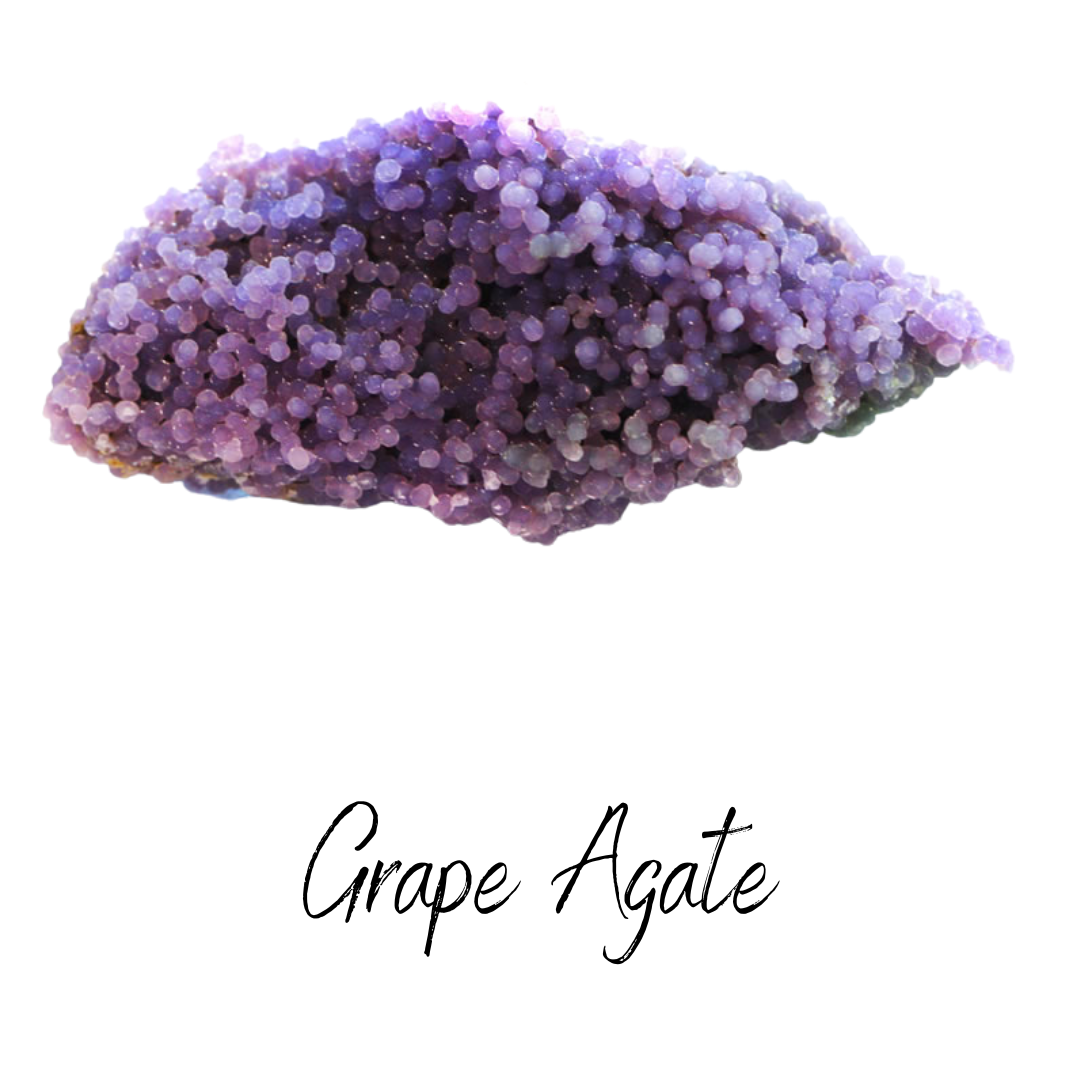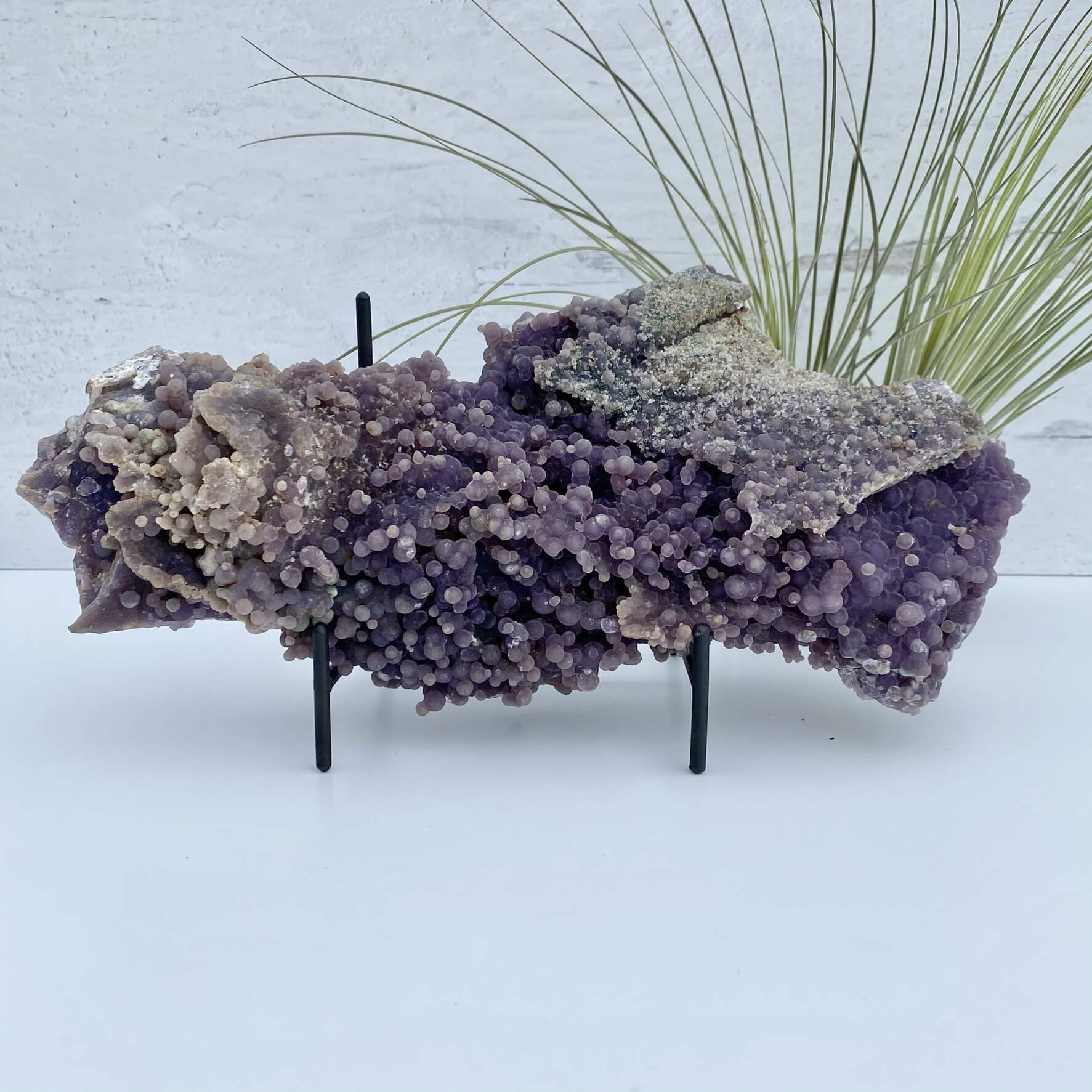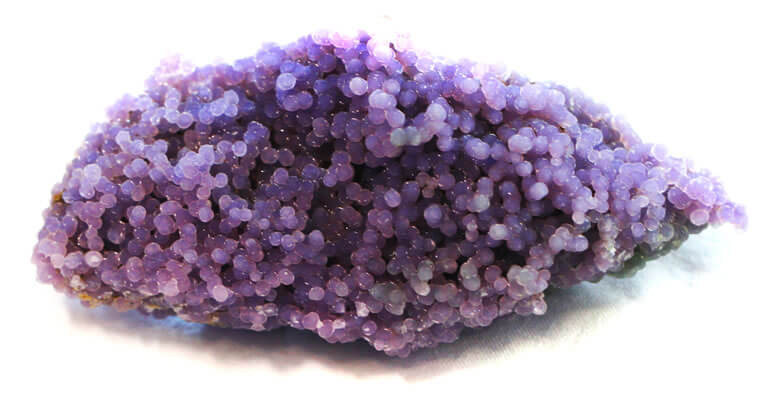
Grape Agate
Also known as: Botryoidal Purple Chalcedony
Key Words:
Spiritual Awareness · Inner Stability · Self-Confidence · Emotional Balance · Calmness
Grape Agate is the trade name for a unique variety of purple quartz made up of tiny, naturally spherical crystals. These small spheres form tight clusters that closely resemble bunches of grapes—hence the name. The technical geological term for this shape is "botryoidal," and it refers to any mineral that grows in a rounded, grape-like form.
This material comes from the Mamuju area of Sulawesi, Indonesia, where it was discovered relatively recently. While most sought-after specimens are shades of lavender to deep purple, Grape Agate can also occur in white, gray, blue, or green tones.

Grape Agate is especially appreciated for its calming and centering energy. Holding a piece or keeping it nearby can promote a greater sense of emotional stability, composure, and inner strength. Its clustered structure and soft color palette tend to invite quiet reflection and are often used during journaling or relaxation practices.
While its surface is gentle to the touch, Grape Agate is a form of chalcedony and holds the same durability and hardness common to quartz-family stones. It’s a good addition to a personal collection for anyone who enjoys working with stones that have both visual appeal and energetic steadiness.
Some find that Grape Agate helps quiet mental noise and supports concentration when used in focused environments. It can also serve as a visual reminder to filter out what doesn’t matter and reconnect with what does. Because of its unique structure and mineral makeup, it’s sometimes used as a grounding tool during periods of emotional change or uncertainty.

Grape Agate’s compact, clustered formation gives it a sense of completeness and wholeness. It’s a stone that quietly encourages rest, renewal, and deeper awareness—whether during study, meditation, or times of emotional reset.



